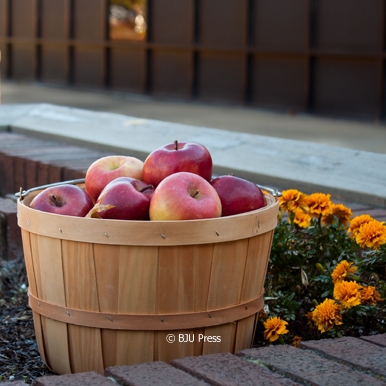When you hear the phrase “the first Thanksgiving,” what are some images that come to mind? You have probably seen enough artists’ renderings of this event to have a mental picture of fall trees, a table loaded with traditional Thanksgiving fare, and an assortment of Pilgrims and Wampanoags enjoying a peaceful meal together. A number of historians have exposed the mythical elements in scenes like that. For example, while there might have been turkey at the feast, there would not have been potatoes. The Pilgrims would have lacked sugar for sweetening cranberries and ovens for baking pumpkin pies. The menu may have even included such nontraditional items as mussels, crabs, and eels. Since furniture would have been scarce in Plymouth Colony, even the table itself is a questionable detail.
Historical errors have also crept into the way Pilgrim clothing is depicted. Large buckles on hats and shoes were not affordable for common people, and Pilgrim men probably would not have worn them even if they had been. Written records of the Pilgrims have revealed that they wore bright-colored garments, especially for festive occasions, rather than mournful black.
It’s also possible that the presence of the Indians at the Thanksgiving feast was not entirely comfortable for the Pilgrims. No doubt there were lingering tensions on both sides, despite peaceful relations on the surface.
But perhaps the one thing most of us lack in our mental picture of this feast is an understanding of the Pilgrims’ state of bereavement. The Pilgrims were undergoing a period of deep personal grief. Only about half of their number who had voyaged on the Mayflower had survived the first winter. Nearly every family had experienced a death. Only four of the married women were still living. Most of the Pilgrims at the feast were men or children under the age of sixteen.
The exact character of the 1621 harvest feast is a subject of debate. Some scholars think it was more of a festival than a serious religious holiday. But whatever the mood of the occasion, the fact remains that even in the face of excruciating personal trials, the Pilgrims took a day to celebrate God’s goodness. The Pilgrims at the first Thanksgiving teach us that giving thanks is an act of faith. A truly thankful person looks beyond the present difficulties to see God’s gracious hand opened, giving what is best. May we be reminded this Thanksgiving Day that we too are pilgrims on a journey planned and guided by an all-wise God. May we have the faith to lift our eyes above life’s barren fields to thank God for His bountiful blessings—past, present, and future.
What are you thankful for this year?
